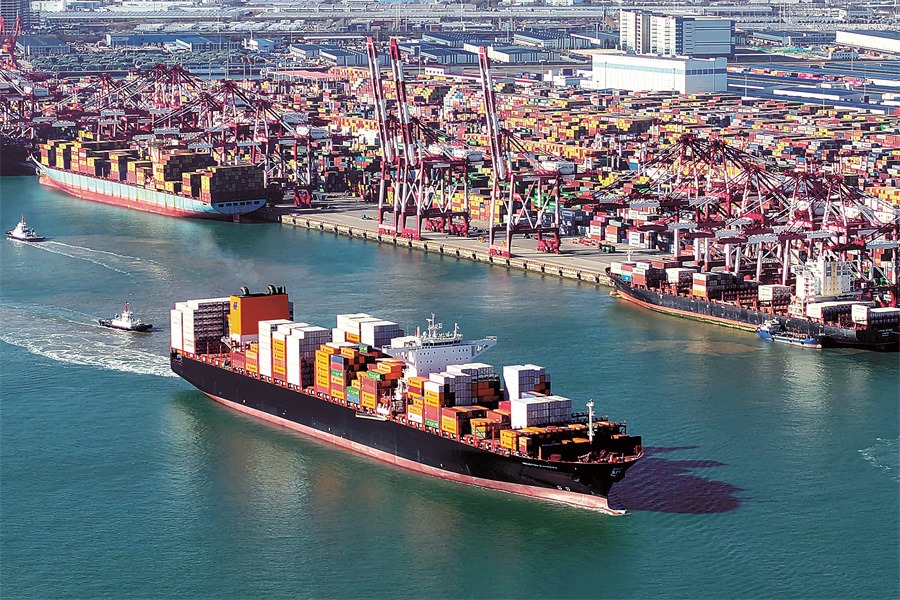A global growth engine despite slowdown


Released by Premier Li Keqiang at the annual session of the National People's Congress on Tuesday, the Government Work Report sets the general tone for this year's economic policies.
Although this year's report addresses many important international challenges, it makes it clear that China remains committed to building a better future.
Growth target reasonable amid global challenges
For 2019, China has set a lower, flexible economic growth target of 6 percent to 6.5 percent, while raising its tolerance of fiscal deficit at 2.8 percent of GDP.
The point about the GDP growth target is not how much it will exceed 6 percent, but that it should not fall below that level. Which is vital to sustain the quest to double people's average income by 2020 compared with 2010 level. Indeed, China is focused on raising per capita income, eradicating absolute poverty and combating climate change.
China is also planning to cut 2 trillion yuan ($298.38 billion) in taxes and corporate pension payments, particularly to ease the burden on small and medium-sized enterprises, while also planning to cut the value-added tax rate that covers the manufacturing sector by 3 percent.
In this policy mix, the focus is on cutting banks' reserve requirement ratios, instead of lowering interest rates, and guiding liquidity into SMEs. Which supports the aim to create more than 11 million new urban jobs.
Contribution to global growth to continue
Growth also matters at the aggregate level. Despite deceleration, the size of the Chinese economy has nearly tripled in just a decade. Last year alone, China's added GDP was equal to the value of Australia's total output. And that China's contribution to the world GDP growth will continue to exceed 30 percent means it will continue to support global economic prospects.
Still, skeptical observers note that the purchasing managers' index (PMI) fell to 49.2 in February representing the worst performance in three years. But the PMI data should be seen in its historical context. Since a decade ago, when Chinese growth relied mainly on manufacturing exports, the PMI data reflected economic realities directly. As China is rebalancing away from manufacturing exports, PMI offers a less accurate picture of the full economy.
Indeed, the new Caixin PMI — which focuses on light industry, as opposed to the official survey's focus on heavy industry — posted a sharp rebound in February, rising to 49.9 from 48.3 in January.
Strong foreign investment, strengthened IPR protection
In addition to Chinese growth, international observers are focusing on foreign direct investment (FDI) legislation and intellectual property rights (IPRs), largely due to China’s trade conflicts with the United States.
In January, China's exports rose 9.1 percent year-to-year, up from -4.4 percent in December, and its trade surplus with the US remained high due to a sharp fall in imports and modest decline of exports.
Even before the US and China began talks amid hopes for an agreement that would head off US President Donald Trump's planned March 1 tariff increase on $200 billion of Chinese goods, China had been pushing plans to introduce a new foreign investment law. It is widely expected to replace three existing regulations and to increase IPR protection, while limiting forced technology transfer.
Instead of fair commercial competition — whether in 5G use or other areas — Washington is increasingly relying on contentious "national security concerns" to impair rival companies in China, Europe and elsewhere. What the US needs is a broad rethink in its own areas of inward foreign investment and IPRs, which should support — not derail — global economic prospects.
Move to improve efficiency of financial resources
China's economic slowdown has eased thanks to early issuances of local governments' special-purpose bonds and targeted adjustments to monetary policy, as well as increased infrastructure investment. This year, China plans to issue 2.15 trillion yuan ($320 billion) of special local government bonds.
Since 2015, President Xi Jinping has promoted the idea of the supply-side reform to achieve greater policy focus on reducing industrial overcapacity, stock of unsold homes, borrowing costs and taxes for companies, and to deleverage the corporate sector. As the scope of supply-side reform has now been broadened to include the financial sector, bank regulators are offering more diversified financial services, strengthening the monetary transmission channels and improving the efficiency of financial resources.
Moreover, financial tides are turning. Surging fund inflows indicate a rebound in sentiment for Chinese equities as the market registered sharp inflows of funds billion in 2018, nearly reversing prior years' outflows. As the US Federal Reserve's tightening seems to be peaking out, optimism is rising in China.
The valuation of the Chinese market, as measured by CAPE (cyclically-adjusted price-to-earnings ratio) is still relatively low at 15, whereas the comparable US figure, despite recent losses, remains almost 31; twice its historical average and as it was during the 1929 crash. In financial markets, therefore, China has huge structural potential to expand, whereas the US is hovering too close to a secular edge.
Commitment to better future will be recognized
The Chinese leadership's commitment to more inclusive globalization remains strong, as Xi affirmed while commemorating the 40th anniversary of reform and opening-up in December. And China's innovation is evident in world-class productivity in the Greater Bay Area in South China, and international cooperation in the Belt and Road Initiative that’s fueling 21st century globalization.
Irrespective of international challenges, Chinese reforms will prevail. And people across the globe will recognize the Chinese leadership's commitment to help build a better future for humanity.
The author is the founder of Difference Group and has served at the India, China and America Institute (US), Shanghai Institute for International Studies (China) and the EU Center (Singapore). The views don’t necessarily represent those of China Daily


































